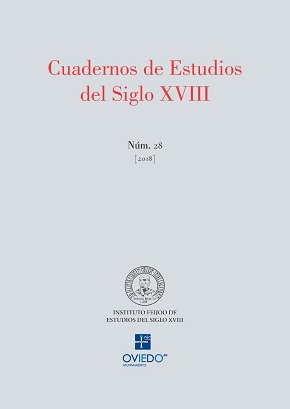Resumen
RESUMEN
En el presente trabajo analizamos diferentes casos de censura inquisitorial sobre pinturas deshonestas, obras artísticas y representaciones consideradas indecentes por la Inquisición a finales del siglo XVIII y principios del XIX, tanto en la Península como en sus reinos de Indias, además de la evolución de la percepción en este tipo de obras desde el XVI. Estudiamos las resistencias, motivaciones y razones expuestas por acusados para justificar su libre posesión, comercialización y exhibición y su relación con el discurso y el pensamiento ilustrado, permeado ya en esta época a niveles populares de la sociedad española. Mostramos también las diferentes influencias y apropiaciones culturales, los cambios en la axiología, el gusto estético y el pensamiento de los españoles, así como los intentos de control de la moral por parte de los inquisidores y sus reacciones.
PALABRAS CLAVE
Ilustración, Discurso ilustrado, Percepción del arte, Inquisición, Censura.
TITLE
Enlightened speech as a defense of artistic work: «that is art dexterity and not dishonest painting»
ABSTRACT
In the present work we analyze different cases of inquisitorial censorship on dishonest paintings, artistic works and representations considered indecent by the Inquisition at end of the 18th century and beginning of the 19th century, both in Peninsula and in its kingdoms of Indies, besides the evolution of perception on this kind of works from 16th century. We study the resistances, motivations and reasons exposed by defendants to justify their free possession, commercialization and exhibition and their relationship with the enlightened discourse and thought, permeated at this time at popular levels of Spanish society. We also show the different influences and cultural appropriations, the changes in the axiology, the aesthetic taste and the Spanish thought, as well as the attempts of moral control by inquisitors and their reactions.
KEY WORDS
Enlightenment, Enlightened speech, Perception of art, Inquisition, Censorship.

